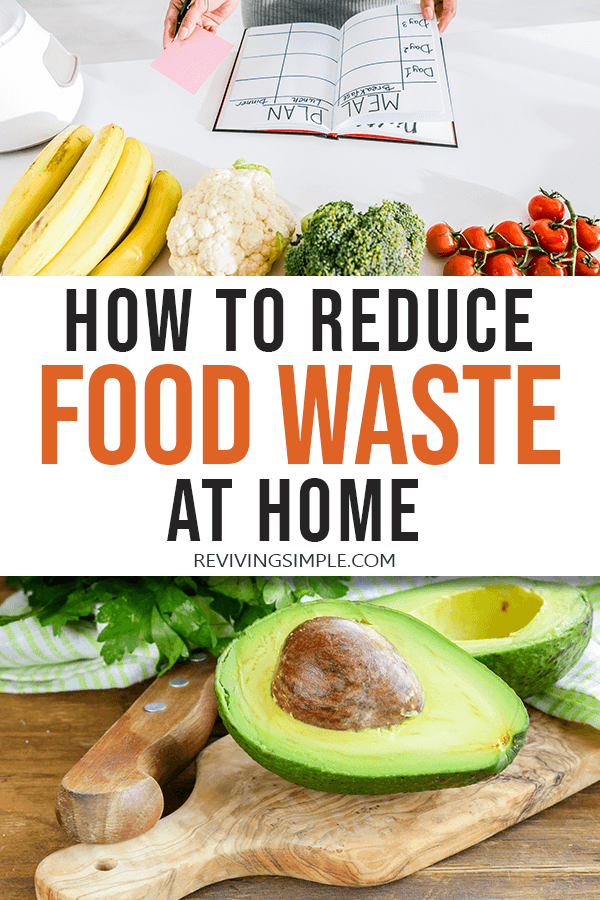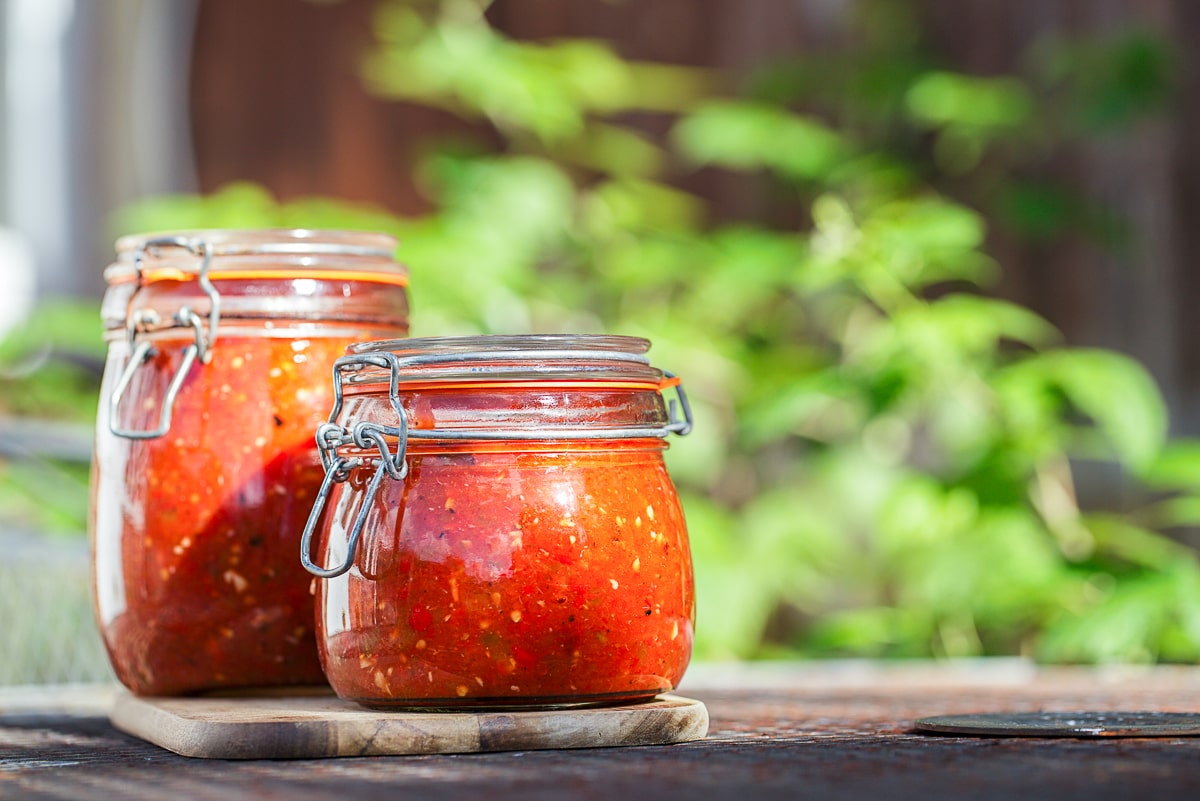Wondering How To Reduce Your Food Waste At Home? Here Are Our Tips!
It’s no secret that there are benefits to reducing food waste – from the financial benefits for you to the environmental impacts that can be felt locally and globally. Whatever the motivations, reducing food scraps is an important step when it comes to taking responsibility for our future to promote a more sustainable food system.
However, until these shifts in food policy can happen, there are loads of great ways we (as individuals) can have a significant impact on food wastage. These steps to reducing food waste can start at home, continue at the grocery store, move to the kitchen, and end at the waste/compost bin.
To be honest, none of the tips mentioned in this article are ground-breaking ideas – it’s the part of implementing them that makes a difference. This is where we usually lose people: forming commitment to a new task so that it becomes habit! Don’t worry, you are not alone. We aren’t perfect either (as you will read) but we try to be conscious about how we buy and use food – and make sure it goes as far as it possibly can!
Go Shopping With A Grocery List
Have you ever gone to the grocery store without having a plan in mind for what to buy? In the past, we have done that more than once – and honestly, it wasn’t really an enjoyable experience.
Walking around the store aimlessly and being unsure what to put in the shopping cart can actually be kind of stressful. And often it resulted in us buying things that we then didn’t really use – and had to throw out a few days or weeks later. This food waste could have easily been avoided!
Luckily, we have learned over time and now (pretty much always) go shopping with a grocery list. Not only does it reduce the actual amount of time we spend at the store, but it also makes us feel more confident about the products we put in our cart since we have thought this through beforehand.
Nowadays we barely ever buy something we don’t at least have a recipe or use in mind. Reducing the amount of “unaccounted” items we bring into our home is an important first step in decreasing our food waste.
Read Next: How to reduce the amount of plastic waste at home
Know How To Store Produce
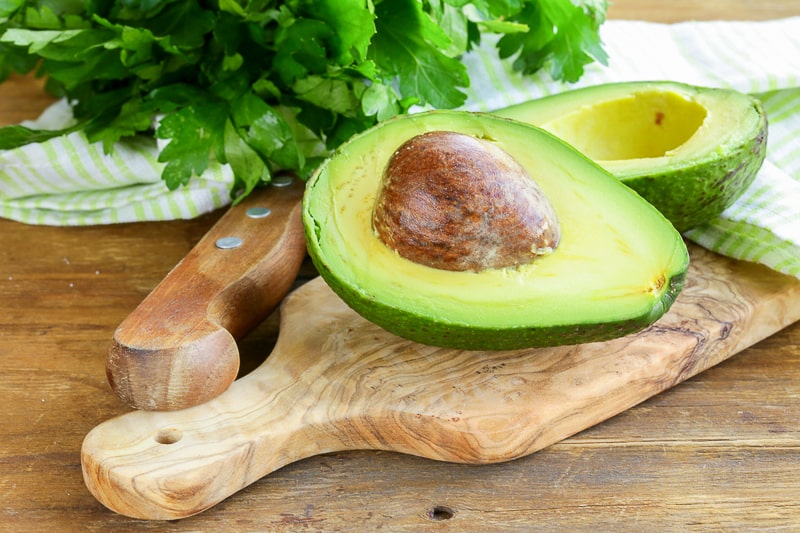
It’s important to know how to store produce correctly since it can go bad much faster than necessary if you do it incorrectly. Over the years we have learned the correct storage method for quite a few fruits and vegetables but there are still some that we aren’t sure about either.
For example, potatoes as well as garlic and onions should be stored in a cool and dry place and not in the fridge. Similarly, produce like avocados, tomatoes, bananas and kiwis should be stored at room temperature – for example in a fruit bowl on your countertop – and only stored in the fridge once they are fully ripe.
As you probably know, it’s best to store bananas on a hanger to avoid brown spots. And in case you have bananas that are almost too ripe, you can always peel them, potentially cut them, and store them in the freezer to use for smoothies, etc. at a later date.
By storing your produce correctly, it won’t go bad as quickly. However, you should still only buy the amount of fresh produce that you would actually consume in a reasonable amount of time. Usually we go shopping once a week and buy fruit and vegetables for one week. To minimize the risk of produce waste, we usually buy a healthy mix of fruit/vegetables that have to be consumed within a couple of days and produce that will stay fresh for longer.
Make A Meal Plan
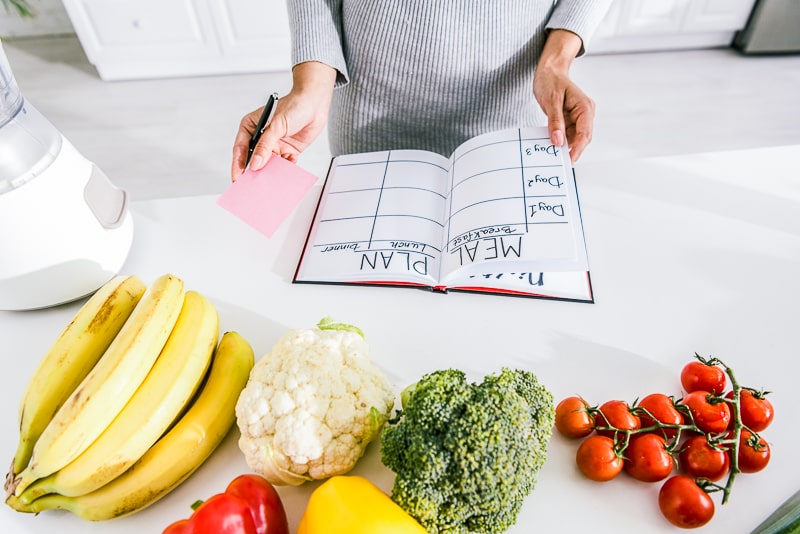
This tip for reducing food waste at home is slightly related to the point about going shopping with a grocery list that we talked about earlier – but it goes beyond going to the store. Besides knowing what to buy, knowing how you are going to use the items can really help you avoid food waste.
By having a plan for when to use the ingredients that you bought, it’s easier to make sure that you use them before they expire or go bad. At the same time, you know which items are fair game as a snack, etc. since you already know what you’re cooking throughout the week. Overall, a meal plan just helps you better allocate the items that you buy at the store.
To be honest, we have not been super consistent recently with making a meal plan every week. However, one of the main reasons for that is that after doing it for a long time we have a good understanding of what we’ll eat in a week. Also, as we have been simplifying our life more, our cooking has also changed noticeably. We are planning on writing a detailed article about these changes soon.
In brief, our cooking has gotten a lot simpler – often including veggies, some form of protein (beans, lentils, tofu, tempeh, and in some cases meat) and a carb component such as rice, pasta, bulgur, quinoa, potatoes, etc. In the food section of this website, you can also find some of the simple recipes that we use quite often!
Organize Your Fridge And Pantry
Have you ever looked for something in your pantry only to find another item that you had no idea was even in there? That has happened to us before – and our pantry only consists of a couple of cupboards.
Organizing your fridge and pantry – and knowing what is in there can greatly help you to reduce the food waste you create at home. We like to organize both our fridge and our pantry in a way so that items of a similar category go together, such as canned legumes, pasta, and rice, etc. At the same time, we also like to store the items with the earliest expiry date closest to the front. This way we’re more likely to use them up before they go bad.
After organizing your pantry and fridge, don’t be surprised if it looks cluttered/disorganized again after a few weeks. That’s quite normal since you access them so often. What has helped us a lot is to make it a point to clean out and wipe down the fridge and pantry regularly (every six weeks or so). And as you get more used to organizing your pantry and fridge a certain way, you’ll start putting things back in the same place automatically over time.
Cook The Right Amount
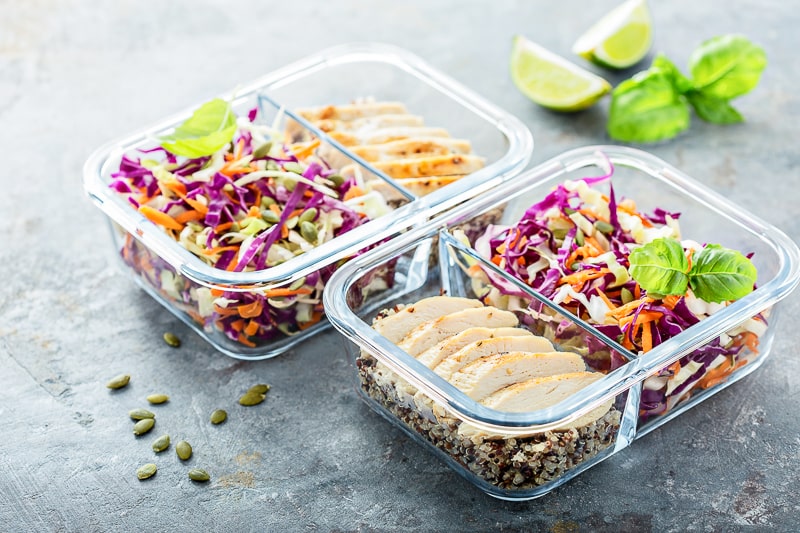
Cooking too much food can be another reason for creating food waste at home. It’s completely fine to cook more than you’ll eat in one meal – in fact, we do this quite often – but this should be your intend and not happen accidently.
That’s why we’d recommend asking yourself before you start cooking how much food you actually want to make. Do you want enough food for dinner and then eat the leftovers for lunch the next day? Do you want to freeze some of the food you’re going to make? Do you only want to make enough food for one meal?
We usually aim to cook enough for dinner and then lunch the next day. This way we don’t have to worry about what we’ll eat for lunch – and it’s just so easy to heat up leftovers. No matter what you decide to do, think about it beforehand – and then adjust the amounts accordingly!
Eat Leftovers
We really like leftovers – and we know there are people who really don’t. That said, if you cook the right amount of food (read above) and you make leftovers, actually eat them. Not only can you get a meal out of it, but it can also save time and will save you money when you don’t just throw the food away.
As a rule of thumb, we have found that it works better if we eat leftovers the next day. Some leftovers might go bad rather quickly (depending on what it is) so it’s always good to eat them as soon as possible.
It’s true: The longer the leftovers are in our fridge, the less likely we are to eat them. And yes, sometimes we do throw away smaller amounts (which we don’t like to do). However, we are generally pretty good at planning meals out to make sure we have almost zero food waste.
Get Creative In The Kitchen
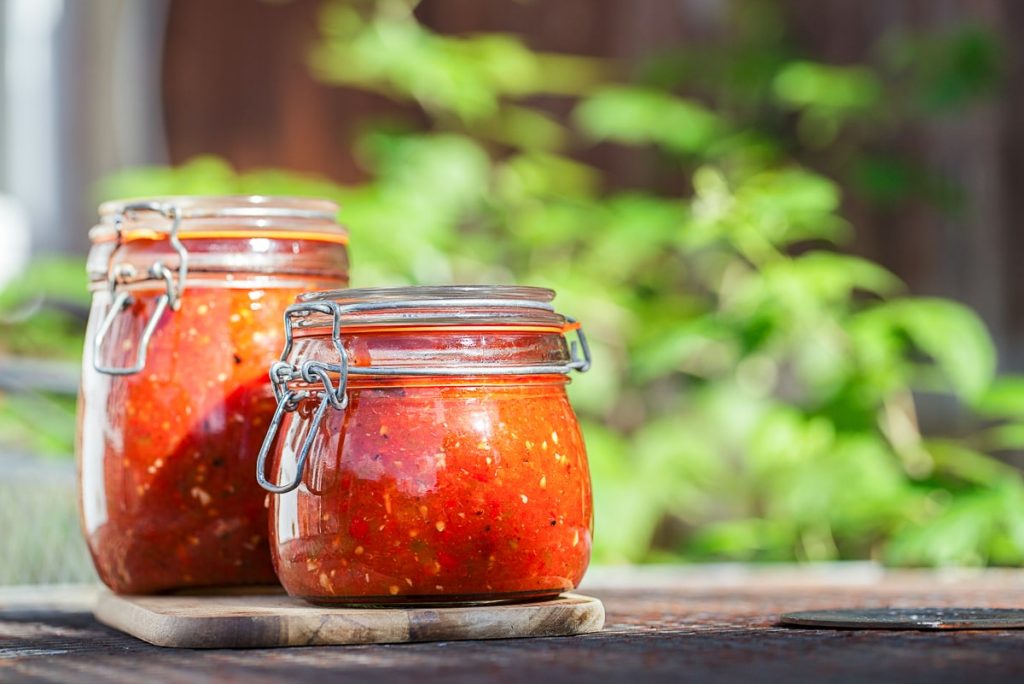
Another great way to reduce food waste is to use the scraps you have lying around by being a bit creative. We’ve definitely been there – sometimes we have ingredients at home that don’t go well together at first glance (or so we think).
But instead of letting some of them go to waste, we try to be creative. This is where Pinterest often comes in handy. We either find a recipe that incorporates as many of the items as possible – or we just try to improvise based on our food pairing knowledge and/or past experience.
Honestly, we do that frequently and most of the time we create meals that turn out quite well. However, if you are consistent with your meal plan and shopping list, you shouldn’t have too many random items at home to begin with.
Compost
This is a point we are currently struggling with. We would love to compost our organic produce scraps – such as potato peels, apple cores, etc. – but we currently live in a small apartment building without any green space for a composter or even a green bin. Hopefully, this will change in the future but for now we are at least trying to use as much of our produce as we can.
If you have a garden available where you can compost or have the option of getting a green bin from your municipality, then you should consider doing that. When you compost in your garden, you’ll eventually be rewarded with fertile soil that you can use to grow more vegetables (that’s one of our goals for the future)! And if you use the green bin, it should also be composted – or it might be used for bio-fuel depending on where you live.
And there you have it – our list on how to reduce food waste at home. In the end, the effort you put in will have a direct impact on the amount of food waste you create at home. It really is up to you to make it happen. Is there anything we missed that you would add? We’re so keen to get composting in the future – and we’ll keep you posted as our journey progresses.
As always, Keep It Simple,
-E&L
[cp_popup display=”inline” style_id=”431″ step_id = “1”][/cp_popup]
Pin It For Later!
